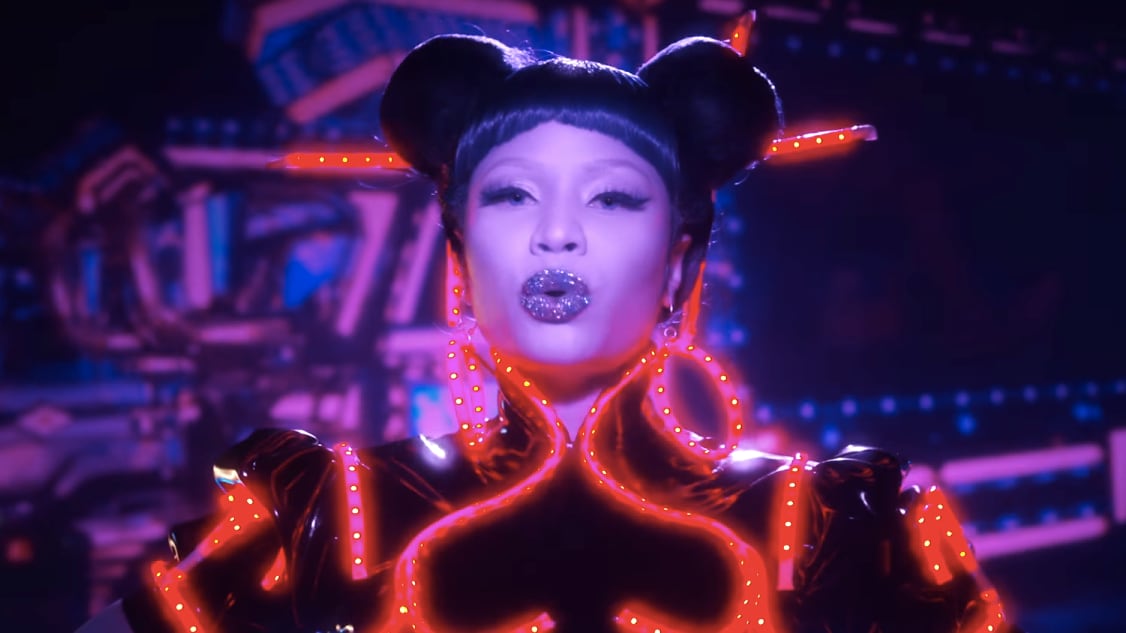I went and copped the chopsticks. Put ‘em in my bun just to pop shit.
Pop culture has always had an odd obsession with Asian stereotypes. The latest addition is Nicki Minaj’s single “Chun-Li.” Named after the popular character with the Spinning Bird Kick from Street Fighter II, it’s a self-empowerment anthem that uses the fighter as a reference for Nicki’s own prowess as a rapper.
It has, however, led to Nicki being accused of cultural appropriation for adopting an Asian persona and using stereotypical Hong Kong film music in her song. More than that, it inspired the #ChunLiChallenge on Instagram, with users taking photos of themselves in chopsticks and other racist Asian garb.
As written by David Yi in Teen Vogue, “It might seem acceptable for non-Asian people to wear a piece of what is deemed as ‘Asian culture’ to recreate a social media video, but it speaks to a larger issue about how social media commodifies groups and cultural identities. The #ChunLiChallenge only further highlights how easy it is to flatten an identity to certain stereotypes or cultural markers. In this case, it allows mistreatment of Asian culture to flourish. It’s been nothing short of disheartening to see Nicki continue to present a reductive version of Japanese culture, which she’s been accused of in the past, too; in 2017, there was her H&M collaboration with emblazoned sweatshirts and tees with Kanji characters and Japanese motifs like cherry blossoms and paper fans. Previous tracks have included references to geisha and samurai, and she’s also cosplayed as a ‘Harajuku Barbie’ persona.”
There’s always been an odd uncertainty when it comes to cultural appropriation in pop music. It’s usually marginalized groups being exploited by a dominant group—like white people in black face or wearing Native American headdresses at music festivals. But black people historically have not oppressed Asian people. Can cultural appropriation even exist when there are no power structures that divide both groups? Is it actually a true form of cultural appreciation rather than appropriation?
After all, Minaj is much different from Gwen Stefani’s Harajuku era.
In 2014 Eliana Dockterman wrote in Time, on the occasion of Stefani’s musical comeback, that she has never answered for her appropriation since it occurred in the pre-cultural awareness era: “the pop culture world wasn’t vocal enough on Stefani’s appropriation of Asian culture for personal gain. Sure, 2004 was a different time—but it isn’t localized to that era: Stefani has a Harajuku Lovers line of fragrances and a Harajuku Mini fashion line for Target. Her obsession with the culture walks a very thin line between admiration and appropriation. It’s easy to wonder if Stefani had a hand in inciting what has now become a common cultural practice of white female pop stars using other races as props.”
Maybe to understand it we should look to comedian Margaret Cho, who compared it to blackface. “Even though to me, a Japanese schoolgirl uniform is kind of like blackface, I am just in acceptance over it, because something is better than nothing. An ugly picture is better than a blank space, and it means that one day, we will have another display at the Museum of Asian Invisibility, that groups of children will crowd around in disbelief, because once upon a time, we weren’t there.”
We have a responsibility now to respect other cultures, and if we want our own to be, we should do the same. Of course, Minaj’s misstep is a far cry from other rappers who fetishize Asian culture sexually—like Drake (“let the lights dim sum”), or Kendrick Lamar calling himself Kung Fu Kenny, or Donald Glover joking about dating Asian women on his albums, or even the level of Madonna or Katy Perry going full-Aloha a la Emma Stone.
It ultimately comes down to treating other cultures with reverence and respect, rather than reducing them to a hollow pop-cultural “aesthetic.”






